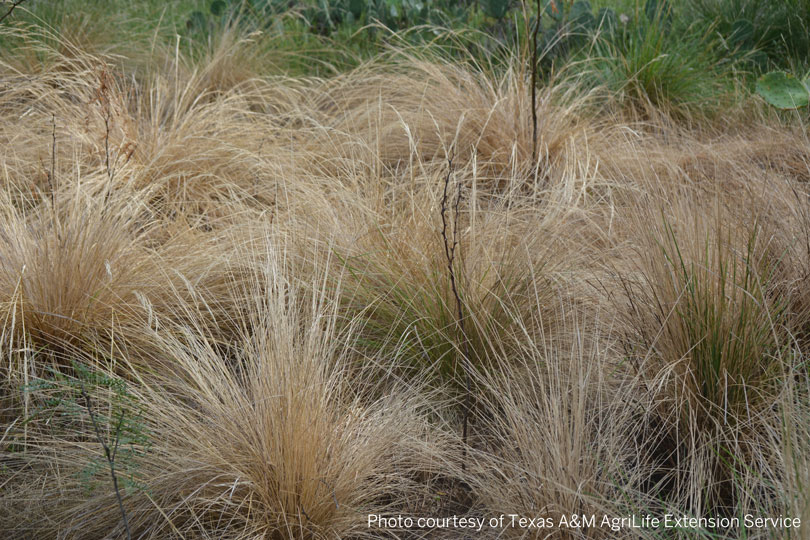By Justin Walker
Communications Specialist
Drought conditions bring high concern for wildfire activity. But the lack of rain in many areas of the state can also bring unwanted guests into rangelands and pastures.
Dr. Emi Kimura, a Texas A&M AgriLife Extension Service agronomist, warned that overgrazing during this time could cause major damage to native plants and put land at risk of invasive species.
“When it is dry, the plant is already suffering,” Kimura said.
Overgrazing during these conditions could thin out pastures and kill off the native species, opening the door for invasive plants such as Mexican needlegrass and Mexican Feathergrass to take over.
“Mexican needlegrass originated from Mexico, but it is causing significant landowner concern because it is so difficult to manage,” Dr. Morgan Russell, assistant professor and assistant range specialist with Texas A&M AgriLife Extension Service in San Angelo, said. “We haven’t really found any livestock species—goat, sheep or cattle—that will readily consume it, because it is very unpalatable.”
Mexican needlegrass is an introduced, cool-season, perineal bunchgrass found along established roadsides. It was first found in Kimball County in the early 1950s by Dr. Jake Landers.
Russell works with Landers on tracking the population growth and manages it through herbicides, prescribed burnings and livestock grazing.
“Mexican Feathergrass is a completely different species and has a completely different background,” Russell said.
She noted the Feathergrass variety is often found in urban landscapes and across West Texas.
“It’s a really popular, attractive, fine-leaved, warm-season bunchgrass,” Russell said.
The popularity comes from the plant’s hardiness and drought tolerance, and current weather conditions are ideal for its growth.
“If it actually establishes in rangeland pastures, livestock won’t eat it or consume it,” Russell said. “So they will overgraze other more desirable, more palatable plants, which leads to the further proliferation of Mexican Feathergrass to grow in population size and density.”
Kimura said weed infestation is just one of sign of overgrazing. Bare ground, lack of plants and short native grasses are all indicators. She stresses that landowners need to avoid overgrazing, but also acknowledges it’s easier said than done.
“It’s very simple, but it is a hard thing to do because if there is green there, the landowner tends to want to graze it because they think they can save money on additional hay,” Kimura said.
But correcting issues caused from overgrazing can cost much more than hay and other supplements.
“Give the pastures enough rest period, so they can metabolize and increase their reserves,” Kimura said.
There is no set timetable for how long a pasture should rest, though.
“It just depends on the pasture,” Kimura said.

